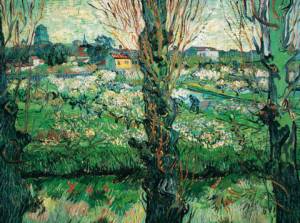Using a daily art calendar for age determination exercises
Posted: December 22, 2012 Filed under: shop talk | Tags: age, art history, calendars, chronology, exercises, Harenberg, painting, periodization, Renate Prochno Leave a comment
Harenberg’s motif for October 20/21, 2012
As the year draws to a close, you might think of getting a calendar for 2013. While there are other ways of keeping track of what day it is nowadays (computers, watches, mobile phones), a calendar with a sheet for each day is useful for age determination (dating) exercises.
In her book Das Studium der Kunstgeschichte, Renate Prochno says an art historian should be able to determine the age of any work of art with an accuracy of +- 20 years. To practice this, she recommends using books like Propyläen Kunstgeschichte, or a postcard collection. However, even more useful for this purpose is an art calendar, because each day it shows a work that is likely to be new to you.
There are drawbacks, of course: all images are printed in the same size, they are cropped in different ways, there’s usually only one view of three-dimensional works, and the selection of motifs is always biased and must not be mistaken for a scholarly sample that is representative of anything.
That being said, I’ve been using Harenberg Kunst calendars (other brands are probably just as good) for years, and I use them like this: when I turn the sheet, I cover the lower part of the new sheet where the artist and title are given (sometimes they’re on the left hand side instead), plus maybe the lower part of the image where the picture is sometimes signed and dated. Then I try to guess the exact year in which the reproduced work was made, and write my guess down on the sheet. On the next day, when I tear the old sheet off, I turn it and compare my guess to the actual date given on the back of the sheet.
This is my success rate for the first ~100 days of 2012 (if a date range was given, I simply took the year that was closest to my guess):
- exact matches: 4 (I guessed the precise year of production of four paintings, all from the classical modern period which I feel most comfortable with.)
- within +- 20 years: 66
- missed by more than 20 years: 31
- missed by more than 100 years: 3 (All of them are Dutch landscapes from around 1665, and each time I mistook them for early 19th century paintings. This is clearly an area I still need to become more familiar with.)